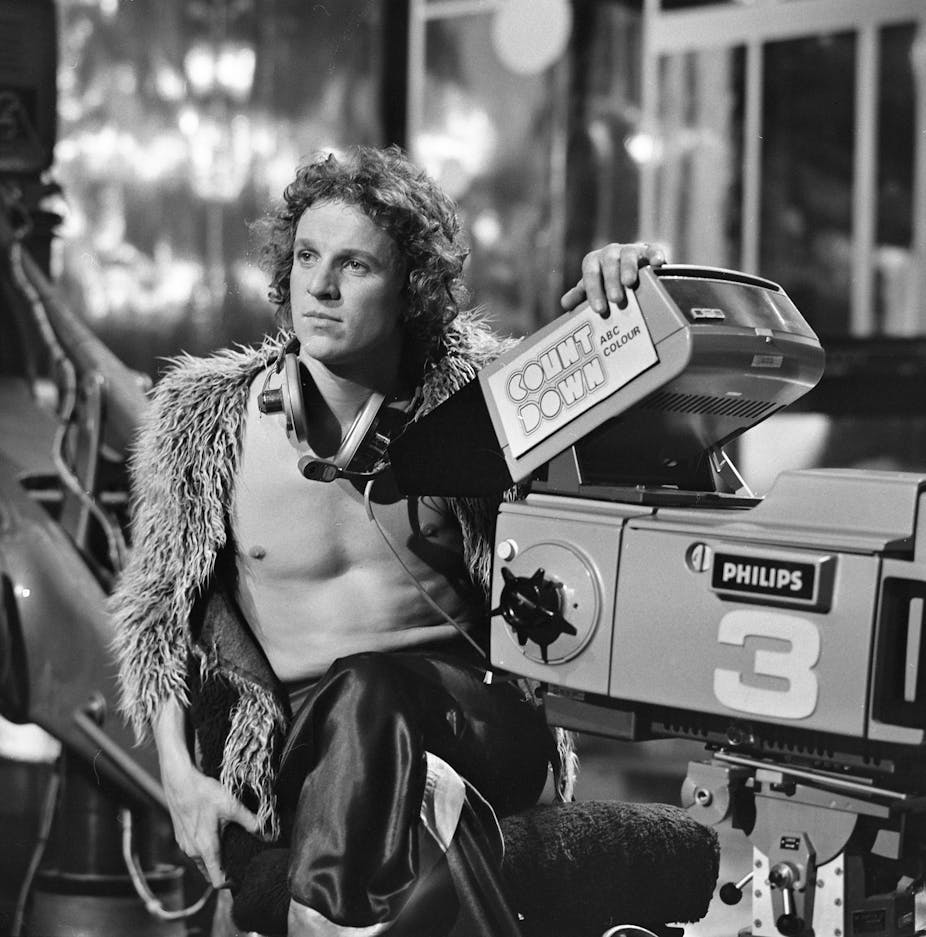Audiences of a certain age still gush about Countdown, the ABC’s music show that ran between 1974 and 1987. The ritual of sitting down to watch the ABC at 6pm on a Sunday (and maybe again for the Saturday repeat) is one that many remember fondly. The lucky might catch old Countdown episodes during music video program Rage’s popular summer series, also an event worth setting the recorder for. Either way, the idea of setting aside time to commune with a TV show based on a particular time slot is an experience that the YouTube generation can scarcely get their heads around.
The ABC will be recreating this experience in 13 “Classic Countdown” episodes - one per year - from September 17 at 6pm (with repeats the following Saturday).
When Countdown debuted on the ABC November 8 1974, television had only been in Australia for about 20 years. The medium was still relatively new and audiences across the nation were still divided by distance as well as access. The ABC lead the way in creating strong networks across regions in a way that commercial outlets couldn’t (or weren’t interested) in duplicating.
Countdown’s emergence in the 1970s was part of a perfect storm. Young people were being included in the national conversation in a way they hadn’t quite been before (including the lowering of the voting age from 21 to 18), while a renewed interest in local production and creative output was emerging. Other music television programs like Kommotion, Young Talent Time, Six O’Clock Rock and the long-enduring Bandstand did feature Australians, but often in supporting roles. Instead, Countdown, lead by talent co-ordinator Ian “Molly” Meldrum, was intent on fostering the local industry beyond cover versions and imitation acts.
Ian Meldrum began in the Australian music industry as a print journalist for the Melbourne based (then nationally circulated) pop culture magazine Go-Set. Launched in 1966 by university students, the magazine soon gained significant attention, not just for its pioneering approach but because of its clever cross-industry promotion.
Wrapped up in this was Meldrum – first as a young journalist and commentator, and then for a while as a performer on music television shows like Kommotion and Uptight. Convinced to be part of the medium because “it would be good for Go-Set”, it was during this time a mini-Molly cult first began to develop. There was no hiding his sheer love of pop music and shameless fandom for all that was good in the genre.
Meldrum’s influence developed sharply once Countdown found its audience. Still working as a DJ as well as writer, his ear for the next big thing was what the show and its viewers relied on. It was also what a nervous local industry waited on, with his endorsement (“Do yourself a favour”) seemingly making or breaking a release. Shamelessly trying to avoid any form of musical snobbery, he did his best to champion what he genuinely considered to be the best of the form.
Molly’s charm on Countdown, as it had been earlier, was his enthusiasm. It’s an approach that made him something of a laughing stock with television professionals – but made those at home love him more. He wasn’t slick like his US and UK counterparts, and instead often became visibly nervous and excited. Even watching again now you can’t help but empathise with him. It was (and still is) bloody charming.
Is there anything new left to say about Countdown?
It’s easy to assume that Countdown is just a nostalgia piece. But there’s still a lot to be learned from the show and its success. Australian music has been given little moments in the (television) sun since the 1970s and 80s, but nothing quite with the same impact. These days artists and audiences are much less naïve to the machinations of the industry - something that can leave us all a little stale in terms of innovation and experimentation.
Countdown’s legacy, and continued lesson, lies not just in the high profile success pieces like AC/DC, Skyhooks, Olivia Newton-John and Marcia Hines. Watching back again, the real lessons lie in the diversity of people and sounds that were featured. The lesson is the kids dancing down the front busy just losing themselves in the pleasure of music. These same kids then went to school or uni or work (or better, the record store) the next day to continue to support the local industry. At least a few who are in the industry now got their first inspiration by watching people, just like them, having a go.
There are also lessons to be gained from the apparent “bumbling” of Molly. He may have “ummed” and “ahhed” during interviews, but you could never deny his belief in the artists he was speaking to. He championed the “big hits” but also the underdogs and “not quite there yet” artists. Especially local artists who didn’t quite look or sound like they belonged anywhere else - and that difference was what made them so fantastic.
So - when you’re digging into the archive and enjoying the Countdown of old, also do a little searching and take a chance on the next local mould breaker. Go on, do yourself a favour.

